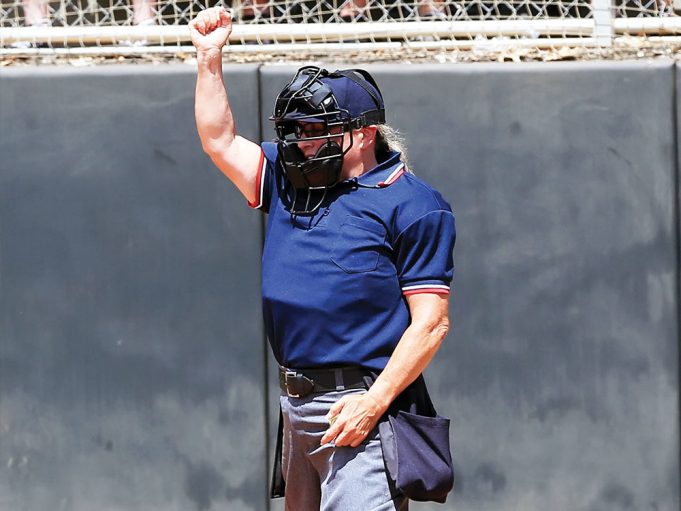Even the best ballplayers go into slumps. A hard-hitting batter is suddenly “popping them up.” A dominant pitcher “loses the strike zone.” An ace fielder begins praying, “Please don’t hit the ball to me.” A top baserunner commits surprising blunders. Slumps are part of the game.
Umpires have slumps too. That’s especially true for plate umpires. Like most slumps, they come on without warning and usually go away in time.
However, unlike a player, a plate umpire doesn’t have the luxury of riding out a slump. For the record, Webster’s Electronic Dictionary defines a slump as “a decline from a standard or accustomed level.”
Getting out of a slump.
To break a slump the plate umpire must go back to basics. First, the umpire will make sure his or her head is one full head above the catcher’s head. The umpire should also try to be at least one full head between the catcher and the batter and at least one full head behind the catcher. The umpire’s goal is to see the entire plate including the outside corner and the ground beyond.
If you are having trouble seeing the pitch, first raise your stance, then move back, then move over. Still can’t see? Move to the best position from which you can see. What about working over the catcher’s opposite shoulder? Some umpires, on very rare occasions, use that position for a few pitches when it is the best position from which to see. However, be aware that many evaluators will “bash” you unmercifully for doing so.
Work a wide base in the slot between the catcher and the batter. Establish a balanced and comfortable stance with your feet flat on the ground in a heel-toe-heel-toe configuration. That is, for a right-handed batter place your left toe on line with the catcher’s left heel. Your left foot will be pointed directly at the pitcher. Then place your right foot behind the catcher on a line from the heel of your left foot to the toe of your right foot. Your right foot will be pointed toward the normal playing position of the second baseman.
Make sure your knees are flared out away from the body. Your body weight should be 80 percent forward and your legs should form an upside down “V.” Be sure your shoulders and head are square to the pitcher with your eyes level.
Do not fold your hands behind your back as that often results in bending at the waist that can cause your head to drop. Remember to bend at the knees rather than the waist.
Place both hands loosely in front of your groin area or place your right hand in a specific area just below the rear of your right hip on your upper leg in a “locking” mechanism that will ensure proper head height throughout the game. Use of that locking mechanism is critical or optionally develop a personal locking device that’s effective. Work mirror opposite for a left-handed batter.
Drop to your set position when the pitcher brings her hands together while on the pitcher’s plate. Use the six steps to calling a pitch, which are crucial for having a good ball-and-strike game.
- On the pitcher’s plate (be alert).
- Get set (drop to your set).
- Track (track the pitch).
- Read (initial determining of the status of the pitch).
- Hold (final determination of the status of the pitch).
- Call it (announce your decision).
Increasingly, umpires are adopting the “Gerry Davis Stance” where the hands are placed on the knees during the “on-the-pitcher’s-plate” mode and kept in that position until the “call-it” phase. That stance ensures head height and helps the umpire to call higher strikes due to a marginally higher head position. Check with your assigner or association to see if that stance is approved.
Lastly, avoid tunnel vision and be a tracker. Don’t let the pitch pass down the tunnel while your eyes are fixated toward the pitcher’s release point. Keep your head still and track the ball with your eyes all the way into the catcher’s glove. Umpires who are good trackers consistently rate high in ball-and-strike accuracy.
What's Your Call? Leave a Comment:
Note: This article is archival in nature. Rules, interpretations, mechanics, philosophies and other information may or may not be correct for the current year.
This article is the copyright of ©Referee Enterprises, Inc., and may not be republished in whole or in part online, in print or in any capacity without expressed written permission from Referee. The article is made available for educational use by individuals.


















